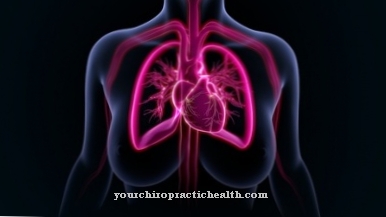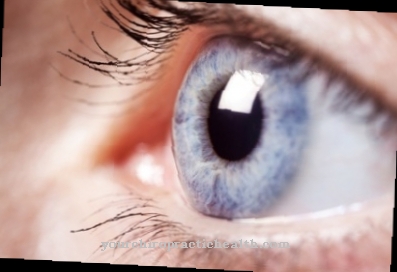As alertness the general consensus denotes the ability to recognize external threats. It is related to the concepts of mindfulness and attention. In evolutionary terms, vigilance is essential for survival, whereby it is not only directed towards external influences, but also towards one's own mind.
What is vigilance?

Vigilance is shaped by one's own awareness of the environment at the present time. It relates to consciousness and plays an important role in meditation. The yoga master Swami Sivananda dealt in his work “How to Cultivate Virtues” with the expression “alertness”, which is to be equated with vigilance.
He explains the term with liveliness and freshness. He also describes vigilance as the setting of attention. Alertness is extremely important in yoga as it helps to recognize and work with oneself. In addition, he equates “to be alert” with “to be wide awake”.
Unfocused, distracted people are not vigilant. This in turn can be improved through various exercises, in which yoga, self-discovery and a high level of concentration play a role. Thus, alertness can also be described as the opposite of inattentiveness and sleepiness.
In addition to negative opposing poles, there are also positive properties that contrast with alertness. These include relaxation, surrender, trust, and hope and confidence. In addition to drowsiness and inattentiveness, opposites with negative connotations are rash, forgetfulness and negligence.
Actions and emotions are controlled by thoughts or desires. Vigilant people usually appear with more acuteness and calm and can thus significantly influence undesirable thoughts better and push wishes aside.
Function & task
The primary task of vigilance is to protect people. It can be equated with the instinct of animals. Those who are vigilant can recognize dangers faster and act faster. Among other things, this reduces the likelihood of accidents. People who are aware of every step they take are also more open to their environment and perceive their surroundings with all their senses. They don't walk blindly through life and usually have a better mood. Alertness can help reduce the tunnel vision of everyday life and turn your eyes back to something else.
An example of the use of increased vigilance is driving a car. With years and experience, people tend to automate driving. The daily commute is no longer highly concentrated, but rather during important phone calls, for example. This automation is distracting and increases response time. The route is known and is driven as usual, but the vigilance decreases with each time that the usual route is driven. If an unexpected incident occurs in this situation, it is often difficult to respond appropriately.
Conscious vigilance exercises, on the other hand, ensure increased vigilance and concentration. Individual occupational groups need more vigilance than others. The property is particularly important for police officers and other security professions who have to be constantly cautious and on guard. The same applies to medical professions, as even minor carelessness or carelessness can have fatal consequences. People with a special role in society should be just as vigilant as people with manual trades. Accidents based on carelessness can quickly occur here too.
In addition, vigilance also helps to build, expand and maintain interpersonal relationships. Friendships are based on mutual respect and understanding. In order to get the most accurate picture possible of a person, it is therefore necessary to be vigilant.
You can find your medication here
➔ Medicines against concentration disordersIllnesses & ailments
Some mental illnesses are associated with increased vigilance. In many cases this initially harmless vigilance expands into a compulsion that exerts pressure on the person concerned. Paranoia can quickly become paranoia from what is actually a positive quality. Some people may even have hallucinations caused by the constant tension and restlessness. In particular, diseases in which this is the case are various anxiety disorders. Panic attacks are often related to increased vigilance.
When fearful people become conscious, large crowds can cause severe anxiety and anxiety attacks. These go hand in hand with excessive alertness and vigilance. The situation is similar with post-traumatic stress disorders.
Stress and hectic, on the other hand, can greatly reduce vigilance. Those in a hurry tend to forget or overlook things. The same goes for people who are mentally or physically impaired and who focus too much on this deficit. Vigilance also suffers from this. People with depression can be so trapped in their own world and inside that they no longer or only half perceive their environment.
Medication and drugs also have a particular influence on perception and alertness. Almost all illegal drugs affect cognition and impair alertness. While some decrease it, others increase it to unhealthy levels. Incidentally, this does not only apply to illegal drugs - alcohol has the same impairing effect on alertness.





.jpg)







.jpg)

.jpg)
.jpg)










